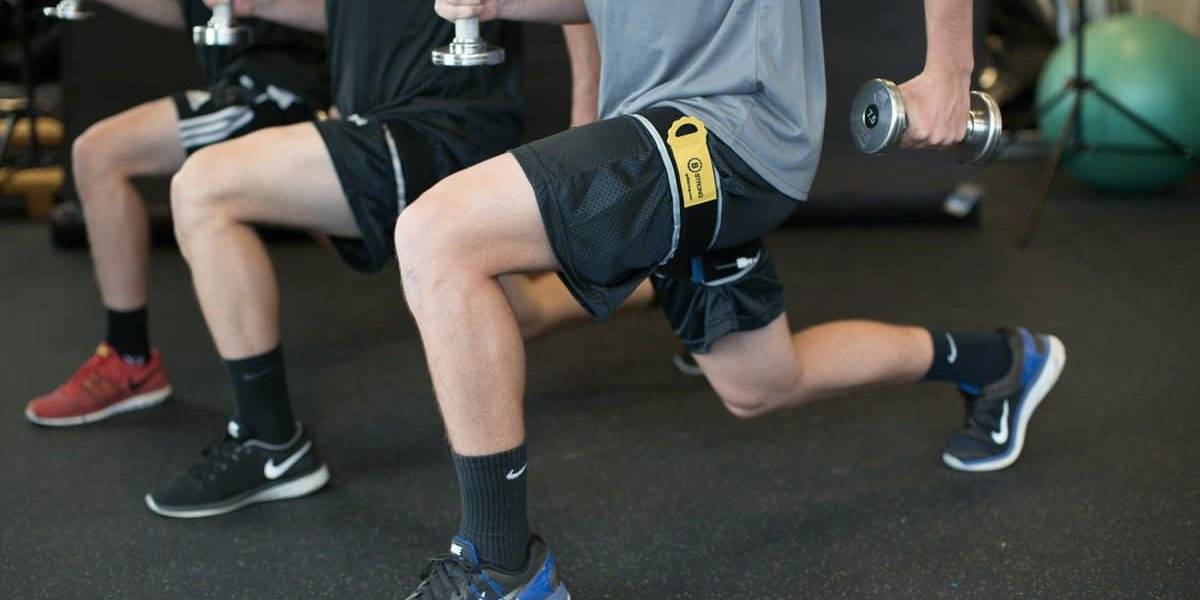Blood flow restriction (BFR) training is steadily becoming the most sought after rehabilitation and performance tool for athletes and the general population. Due to BFR’s clinical outcomes of improve healing, deca durabolin for bodybuilding increased muscle strength, endurance and muscle size.
Clinical BFR training is a method where a medical grade tourniquet and Doppler system work simultaneously to control the rate of blood flow into an arm or leg while performing exercise. The controlled decrease in oxygen content produced by the tourniquet, allow for lite weight exercise to mimic the low oxygen environment that occurs during heavy weight training conditions which includes the formation of lactic acid. Using lower loads combined with BFR to achieve similar if not better muscle adaptations when compared to high intensity training are considered safer and ideal for post-surgical, post injury, in-season athletes, mature athletes and even the elderly.
With the backing of the Department of Defence (DOD), NASA, NFL, NBA, MLB, NHL, USA Soccer, and all SEC D1 teams; BFR training is the game changer that is reshaping the future of rehabilitation as well performance outcomes.
HOW DOES BFR WORK?
Research on blood flow restriction training show that lite loads (20-30% 1RM) which are safely used for rehabilitation, Pre-season and in-season training, as well for the elderly. Using low loads with BFR is an ideal way to incorporate lite weight training for increasing in muscle size, strength, and endurance while minimizing joint stress and aiding in skeletal, soft tissue tendon/ligament positive adaptation and healing.
THEORETICAL AND CLINICAL MODEL FOR BFR
Skeletal Muscle is highly active tissue that requires daily exposure to stress and nutrition.As recommended by the American College of Sports Medicine (ACSM) for an individual to increase in muscle size (hypertrophy – Protein synthesis), one must lift a minimum of 60% of their one repetition max, for 12 to 16 weeks at a frequency of 3 times per week. This recommendations limits injured athletes, the elderly and also in-season training athletes, who all need to limit higher intensities due to risk of further injury.
For decades, the recommendations for immobilization following injury, low intensity training (below 60% 1 RM) and reduced training exposures during in-season training; have all been used to decrease the change of injury and over training. In the cases of post injury and the within the aging population, these recommendations have historically lead to muscle loss, that we call atrophy. This type of muscle disuse wasting, is now commonly understood as “Anabolic Resistance” which defines a drop in both muscle protein synthesis and muscle strength. With effects occurring as fast as within the first 2 weeks of immobilization and reduced exercise stress; we as medical providers are inclined to learn and search for way to combat this impairment before it lead to chronicity.
In order to combat muscle wasting, researchers from around the world, including myself have sought to better understanding anabolic resistance at the cellular level in order to more predictably control and even reverse muscle loss.
Clinical BFR for Rehabilitation and performance, works by lowering the oxygen content in an exercising limb via a tourniquet. The tourniquet is safely inflated and regulated via an FDA listed Doppler system which permits a safe and time controlled experience. Once the tourniquet is filled to an individualized pressure the at reduces blood flow by80% for the lower legs and 50% for the upper body, the exercises that are preformed increasingly become more challenging. This increase in challenge is not a product of the resisted weight being lifted but rather influenced by the normal occurring byproduct of muscle contraction we call lactate. As the lactate rises, muscle are allowed to contract harder by the brain and as a result improve in recruitment, nutrient uptake, vascular growth, positive bone remodeling, endurance, strength and in many cases lead to reduced pain via exercises induced endorphins.
BFR has become a tool for rehabilitation, that can safely be used with low load training to increase muscle protein synthesis, while increasing in tissue regeneration and functional strength recovery.
Equally BFR has become a tool for performance athletes looking to gain increases in muscle size, strength and endurance while minimizing healthy tissues stress; which allows for in-season use and pre-season conditioning.
See also Spartan Workout: Preparing for Spartan Races
BENEFITS OF BFR
BFR training can directly aid you in reducing muscle wasting (atrophy) post injury, which will also reduce strength and functional loss. Once you are ready to preform exercises with BFR, the effects are seen to increase in muscle protein synthesis (hypertrophy), muscle strength, and endurance. For individuals aiming to include performance gains pre-season or in-season, BFR can also be a great tool. Using BFR during the pre-season or In-season model can help to reduce high impact loads to the joints while still providing positive training adaptations to the body.
IMPROVED MUSCLE HEALTH
INCREASED MUSCLE GROWTH AIDS BOTH ATHLETES AND THE ELDERLY
INCREASED ENDURANCE AND FUNCTION
IMPROVED OXYGEN UPTAKE AND ENERGY PRODUCTION
IMPROVED RECOVERY AND LESS PAIN
FASTER RECOVERY, BETTER RESULTS WITH LESS PAIN
WHAT WILL I FEEL DURING MY BFR SESSION?
BFR training will always start with your personal tourniquet pressure being measured. The experience is like that of taking your blood pressure. As the tourniquet inflates you will gradually feel a rise in pressure which is how the built in FDA listed doppler system will measure and track your personal pressure. Following having your personal tourniquet pressure taken, the clinician will adjust the ideal pressure for you and inflate the cuff. The doppler will remain active throughout the entire exercise session which will allow for the best experience. Each session will run approximately 6 to 15 minutes in length where variable exercises will be selected.
See also The 12 All-Time Greatest Female Weightlifters
IS BFR SAFE?
BFR training is a safe modality for rehab and performance goals, when performed by a licensed and certified medical provider who is using a medical device to individually assess limb occlusion pressure. BFR training using the FDA listed Delfi PTS tourniquet system is the only system on the market with the ability to track blood flow and adjust pressures in real-time. This tourniquet system is approved for Workman’s Compensation and is the BFR tourniquet system preferred by professional athlete’s and large orthopedic surgical systems.
WHERE DOES BFR FIT INTO MY ACTIVE RECOVERY OR REHAB PLANS?
BFR training is the current method used by muscle physiologist to study muscle growth due to it’s safety and predictable positive outcomes. BFR training is now commonly used for pre-season and in-season training, as well within the elderly and injured/post surgical population due to its positive effects seen with lite weight and low intensity training which can help to protect tissues, joints, and bones while increasing in strength, muscle size, and muscle endurance.
BFR training can be used in the following days of an injury or surgical procedure to help avoid disuse muscle loss known as atrophy. This same type of disuse atrophy can occur in the elderly population where BFR plays a safe and effective strategy for increasing and improving in quality of life.
When BFR is applied at higher intensities and sport specific protocols, it can be very effective tool for decreasing your 1 minute mile time, peak power and average work load, 1 RM strength, and very effective at increasing in muscle size and density.
BFR training equally can play a role with athlete’s aiming to reduce joint stress while in-season, when back to back games make training difficult but all the more important for improving recovery and muscle/heart health.



